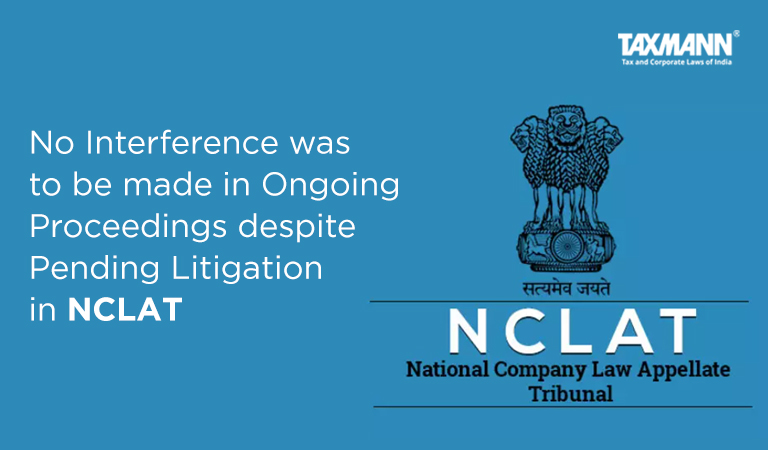No Interference was to be made in Ongoing Proceedings despite Pending Litigation in NCLAT
- Blog|News|Insolvency and Bankruptcy Code|
- 2 Min Read
- By Taxmann
- |
- Last Updated on 17 April, 2023
Case Details: Srei Equipment Finance Ltd. v. Kalpataru Properties (P.) Ltd. - [2023] 149 taxmann.com 34 (SC)
Judiciary and Counsel Details
-
- Sanjay Kishan Kaul & Abhay S. Oka, JJ.
- K.V. Viswanathan, Nakul Dewan, Sr. Advs., Anirban Bhattacharya, Ativ Patel, Ms Priyanka Vora, Advs., Siddhant Buxy, AOR, Krishna Sumanth, Darshit Dave & Sivagnanam K., Advs. for the Petitioner.
- Mukul Rohatgi, Parag P. Tripathi, Sr. Advs., Mahesh Agarwal, C. Rashmikant, Sunil Mittal, Ms Anu Tiwari, Arshit Anand, Ms Geetika Sharma, Ms Mishika Bajpai, Namrata Shah, Ms Nidhi Malhotra, Praveen Dhage, Kyus Modi, Sudhir Kumar, Shamant Satiya, Advs. & E.C. Agrawala, AOR for the Respondent.
Facts of the Case
In the instant case, a Public Interest Litigation (PIL) was filed in the High Court raising issues about certain provisions of the Code. However, the PIL was dismissed and subsequently, a Special Leave Petition (SLP) was also dismissed.
Thereafter, the respondent filed a petition with leave to appeal against the original order of the High Court alleging that they were not parties to those proceedings and that certain observations had been made in that order, which affected pending litigation relating to the respondent.
It was noted that if this was the case, it was the respondent’s responsibility to approach the High Court for appropriate relief. The SLP was dismissed with this liberty. Subsequently, a review application was filed by the respondent, which was decided in their favour against which the instant SLP was filed by the petitioner.
Supreme Court Held
The Supreme Court observed that considerable litigation relating to the matter was pending before the National Company Law Appellate Tribunal (NCLAT), which had not resulted in a favourable order by the NCLAT for the petitioner.
The Supreme Court held that since the petitioner had an independent appeal pending before the NCLAT, the instant proceedings filed by the petitioner were not to be entertained.
The Supreme Court, further held that it was for the NCLAT to examine the petitioner’s appeal on its own merits, and equally, the respondent would have all defences available.
Accordingly, the appeal stands dismissed.
Disclaimer: The content/information published on the website is only for general information of the user and shall not be construed as legal advice. While the Taxmann has exercised reasonable efforts to ensure the veracity of information/content published, Taxmann shall be under no liability in any manner whatsoever for incorrect information, if any.

Taxmann Publications has a dedicated in-house Research & Editorial Team. This team consists of a team of Chartered Accountants, Company Secretaries, and Lawyers. This team works under the guidance and supervision of editor-in-chief Mr Rakesh Bhargava.
The Research and Editorial Team is responsible for developing reliable and accurate content for the readers. The team follows the six-sigma approach to achieve the benchmark of zero error in its publications and research platforms. The team ensures that the following publication guidelines are thoroughly followed while developing the content:
- The statutory material is obtained only from the authorized and reliable sources
- All the latest developments in the judicial and legislative fields are covered
- Prepare the analytical write-ups on current, controversial, and important issues to help the readers to understand the concept and its implications
- Every content published by Taxmann is complete, accurate and lucid
- All evidence-based statements are supported with proper reference to Section, Circular No., Notification No. or citations
- The golden rules of grammar, style and consistency are thoroughly followed
- Font and size that’s easy to read and remain consistent across all imprint and digital publications are applied








 CA | CS | CMA
CA | CS | CMA


